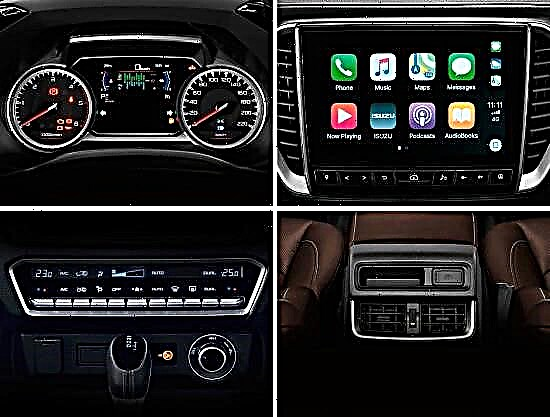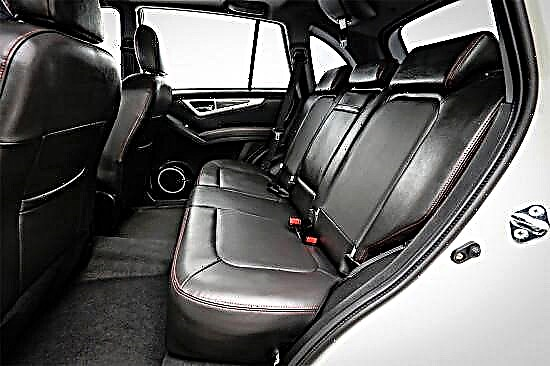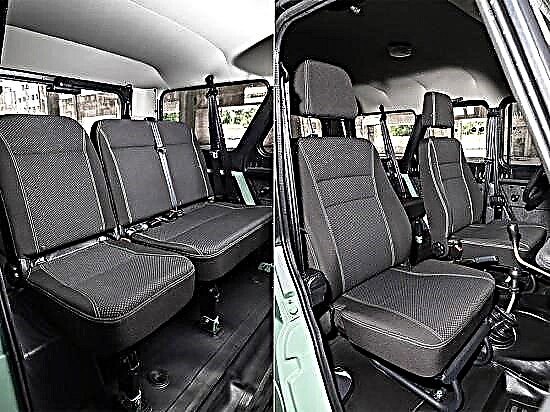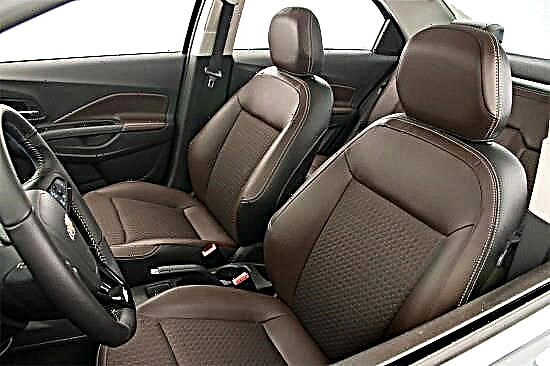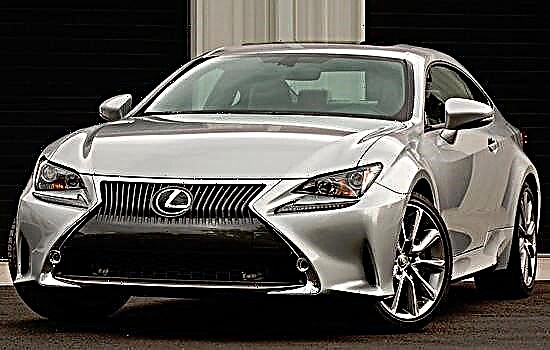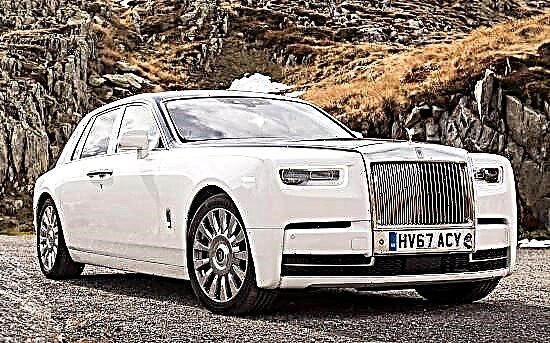Ratings of cars and auto products
Reviews, comparisons & tips for motorists
A vehicle passport is one of the main documents for a car. It contains information about the technical parameters of the machine, its unique identification number, manufacturer data and much more. Unlike a driver's license, PTS is not used to verify the driver's identity - you do not need to carry paper with you. It is not obligatory for presentation, if the driver is stopped by a police officer to check the documents - you only need to show the driver's license. A vehicle passport is needed when making a deal with a car - buying or selling, as well as when changing its characteristics.
The TCP form is approved by state regulations. The document has a single standard - the categories of information are the same for each vehicle. Also, all forms are issued of the same type, with degrees of protection.
A vehicle passport is issued by one of three institutions:
- Customs Service - if the car enters the country from abroad and is cleared;
- State Inspectorate for Road Safety - if the vehicle requires replacement or restoration after loss;
- Manufacturer - When you first purchase a machine from a manufacturer or dealer.
The vehicle passport includes 24 points that allow you to find out about the characteristics of the car, identify it among others and control the equipment, as well as find out who owns it:
- VIN identification serial number. This is a unique 17-digit code of numbers and letters for each machine, which reflects its factory characteristics.
- Car make and model. They can be entered in Russian or English (on the territory of Russia).
- Vehicle type (motorcycle, car or truck, etc.).
- Category - A, B, C, D or E.
- The year the car was launched.
- Engine number and model.
- Frame and chassis number.
- Body number. It may be the same as the VIN or, in the case of some American cars produced for the domestic market, be different.
- Body color.
- Engine horsepower.
- Engine displacement in cubic centimeters.
- Engine's type.
- Maximum permissible vehicle weight in kilograms.
- Unladen weight in kilograms.
- Country of origin.
- The ecological class (approval) of the vehicle is Euro-1, Euro-2 or other.
- The country to which the car was exported, if there was an import (indicated at customs).
- Number and series of the customs declaration.
- Full name or name (for companies) of the current owner of the car.
- Issuing address.
- The name of the organization that issued the TCP.
- The address of this organization.
- Date of issue of the vehicle passport.
Not a new car, which has already been in operation, contains information on all its owners in the TCP. Data on changes in technical characteristics and the issuance of duplicate paper, if any, are also entered.
PTS is necessary in order to register a car in the manner prescribed by law. From this point of view, the document helps:
- Arrange vehicle access to road traffic;
- To make the fight against illegal actions in relation to cars more effective;
- To control the transport that is imported into the country - including determining its belonging to the ecological class.
PTSs exist and are required for three types of vehicles:
- Complete vehicles (cars, trucks, buses, etc.);
- Trailers registered with the traffic police;
- Chassis that are part of the vehicle's equipment.
Duplicate vehicle passport
The original PTS paper can be replaced - such a document is called a duplicate. It is issued for one of the following reasons:
- The original vehicle passport had too many entries about the owners of the car - they no longer fit in the field and had to issue a duplicate of the paper. Likewise with other parameters and records of their changes. In this case, it is strongly recommended to keep a copy of the first one (it itself is confiscated), as otherwise there will be problems when selling this machine.
- The title has been lost, stolen, or damaged.
- The owner's data was changed - the surname (most often for women after the wedding), the place of registration, less often the name or patronymic.
In these cases, the presence of a duplicate PTS should not bother the motorist when concluding a deal. It is enough for the seller to show a duplicate and a copy of the original, and to the buyer - to make sure that the papers are not fake, and the information matches the real characteristics of the machine. In other cases (for example, the original PTS is pledged by the bank, since the car is issued on a loan that has not been paid), the vehicle can bring certain difficulties to the buyer.
How a car owner can legally obtain a duplicate title
Most often, a duplicate vehicle passport is issued to the driver on the day of contacting the police. However, there are situations when additional verification is necessary - why the data was changed and whether it is legal, under what circumstances the original was lost, etc. So the issuance of the TCP can take up to 30 days. In any case, this procedure is not free - you will have to pay a fee.
In order to apply for a duplicate, you need to provide several documents:
- Passport of a citizen of the country;
- Car ownership certificate (ownership);
- A paper that confirms the fact of buying a car;
- CTP insurance policy;
- A receipt confirming that the state duty for issuing a duplicate has been paid;
- Explanatory note in case of loss of the original.
The only difference between the replaced vehicle passport and the original one is the “Duplicate” stamp and an inscription stating that the document was issued instead of one or another PTS. It is this sign that you need to pay attention to when buying a car.
What to watch out for when dealing with a duplicate PTS
If, when buying a car, the seller presents a replaced vehicle passport, it must be borne in mind that he may be a fraud. Criminals use several methods of deception with the help of a duplicate PTS - at the same time they get a replacement completely legally:
- The car was stolen, and the vehicle's passport was restored and changed to the name of the criminal.
- The car was bought in installments, and the loan has not been paid yet - the original PTS is pledged by the bank, but nothing prevents the owner of the car from issuing a duplicate. Thus, the car is resold, and the offender benefits from making only 1 payment on the loan.
The overwhelming majority of cases of fraud with a replaced vehicle passport are fraud with a car in installments. In addition, there are a large number of variants with a fake PTS - this applies to both the original and the duplicate.
How to protect yourself from fraud when buying a car with a replaced vehicle passport
The simplest and most obvious option is not to enter into a deal with a seller who shows a duplicate PTS. Unfortunately, this is not always rational, because sometimes a very advantageous or one-of-a-kind offer comes across. In this case, many buyers would prefer to take a risk - then they should use security measures:
- Get in touch with the car dealership where the seller bought the car. Its name is indicated in the TCP (including the duplicate), as well as in the service book and the mark on the sale.
- Buy a car only from the direct owner. When concluding a transaction with a person with a general power of attorney, there is a high risk of becoming a victim of fraud - even if the document is notarized.
- See in which region the car was registered upon purchase. If it is far from the one in which the sale is taking place, you should be on your guard - perhaps the car was stolen and driven in order to avoid being wanted and sell it faster.
- Examine the vehicle passport for a record of the removal of the vehicle from the register. If it is to be recycled, then it will never be possible to register it again.
- See when a duplicate was issued. It will be most risky to buy a car, the title of which has been reissued within the last few days - most likely, scammers “cover their tracks” and try to sell the car as quickly as possible. It is especially worth taking seriously the "young" cars produced up to 5 years ago - they are often purchased by fraudsters on credit. However, don't be frivolous about old cars with a long-dated duplicate.
- If the transaction takes place in Moscow or the region, check the periods of car ownership by Autocode. The best option - a duplicate was issued 2 or more years ago, and during all this time it had 1 owner. Then the original could really be lost, stolen or damaged.
- Look at the number of vehicle owners for all time. If there are a lot of them, and they change frequently (for example, every 3 months), most likely, the scammers are trying to hide their criminal status.
- Pay attention to the columns in the passport in which the VIN number is indicated - you need to check it with the values on the surface of the body and in the cabin (on special VIN shields).
- In the twentieth column, see if restrictions are imposed on the owner of the car, for example, for non-payment of customs duties or fees.
- Look for information on repainting the body or other parts, replacing any elements. PTS contains all the characteristics, so everything must be described in it and correspond to reality.
- In the columns that talk about the owners of the car, study the data on their documents. Examine the basis on which the transfer took place - if the purchase and sale agreement, then everything is in order. A pledge agreement should be alerted - a sign of credit registration.
- Pay attention to how soon the vehicle is sold after purchase. This does not necessarily indicate fraud - there is another reason. Perhaps the car has suffered a serious breakdown, which the owner does not want or cannot cope with and wants to sell the car (often for the cost of a serviceable one).
- One of the main actions. Ask for a copy of the original vehicle passport. Examine it for content and authenticity. If the seller refuses to show the original, he is most likely trying to hide something.
VIN - you need to check it with the values on the surface of the body and in the cabin
From the PTS you can also find out whether the car was the subject of a criminal case, whether its license plates were “interrupted” and much more.
Authentication of a duplicate TCP
This step is no less important than checking the contents of the vehicle's passport. Sometimes the TCP meets the buyer's requirements, but it turns out to be fake - it is falsified if the seller did not have the opportunity to do this with the original (create a false one or change it). For example, if the owner of the car already has a duplicate. To check you need:
- Look at the VIN numbers on the document and on the car body. If they do not correspond, the car was “broken”, or the paper was issued for a vehicle of the same make, model, color and equipment - this sometimes happens.
- Check the PTS paper itself. The document is issued at the Goznak enterprise and is executed according to a single standard. All technical equipment passports are equipped with degrees of protection - holographic stickers, RUS watermarks, small threads in the paper texture and three-dimensional elements. The ornament should not lose clarity with a magnified view - otherwise, the document was printed with high probability by fraudsters. On the reverse side of the OB van there should be a "rosette" - a logo that changes color from gray to green when the viewing angle is changed. If the paper looks “washed” or worn out, it is most likely deformed during counterfeiting. Otherwise, the driver should make a copy of the original and receive a duplicate.
How not to buy a credit car
Fraud with obtaining a duplicate TCP for a credit machine and its quick sale is the most common scheme of fraud with this document. It happens as follows:
- A fraudster takes a car loan.
- The bank takes the original PTS as a pledge and will give it back only after the installment plan has been paid.
- The offender receives a duplicate of the vehicle's passport, without which the sale is impossible. He refers to the fact that the paper was lost, destroyed or stolen, after which he writes an explanatory note and receives a replacement TCP.
- Further, the fraudster does not begin to repay the loan - he is looking for a victim of his scam.
If the buyer agreed to the deal, and the car turned out to be a credit one, difficulties await him:
- The loss of funds that went to the fraudulent seller is not easy, and sometimes impossible.
- Credit obligations to the bank. The buyer, as the new owner, will have to repay the amount.
Usually, the fraud is revealed the moment the buyer receives a subpoena. It talks about non-payment of the loan, which the motorist did not even suspect, but according to the rules, this is precisely his duty. It is too late to act at such a moment - this may not give a result or not return the entire amount. One way or another, the buyer will lose a lot of time. Unfortunately, in this case, his integrity does not matter. You should try to bring the seller to court.
On the official website of the traffic police, a service is available to check cars for theft, but there is still no database on credit cars. Thus, the buyer can only contact the bank and try to find out if the car was bought in installments - and then if the loan was issued to the seller. There is no effective way to check all this now.
In order to protect yourself as much as possible from buying a credit car with a duplicate PTS, you should:
- Make sure that permanent, not transit numbers are installed on it;
- Be wary if the car was purchased recently, but is already on sale. Likewise with a large number of owners in a short time.
- Check the market price of the car. If the offer with a duplicate TCP is 10 or more percent lower, the seller is most likely a fraud.
- Write down the VIN and tell the seller that a friend from the traffic police will hit the car in the database. You don't have to do this - scammers often refuse to sell.
You can buy a car with a replaced title bar if the seller provides a certified copy of the original passport of the vehicle, which, in turn, does not raise suspicion.
How to sell a car with a duplicate title
Often, drivers find themselves on the other side of the problem - they need to sell a car, but its passport has been replaced. If you cannot show the buyer a copy of the original, it will be very difficult to close the deal - most will think that you are the very scammer. Try selling it to good friends or using a company that buys a car for a client and acts as an intermediary, providing protection from credit obligations.
Outcome
The lack of a copy of the original PTS is a rather serious problem both for the buyer and for the owner of the car with a duplicate document. There will always be a risk for the client in such a transaction, since it is impossible to guarantee the legal "cleanliness" of the vehicle in this case.



